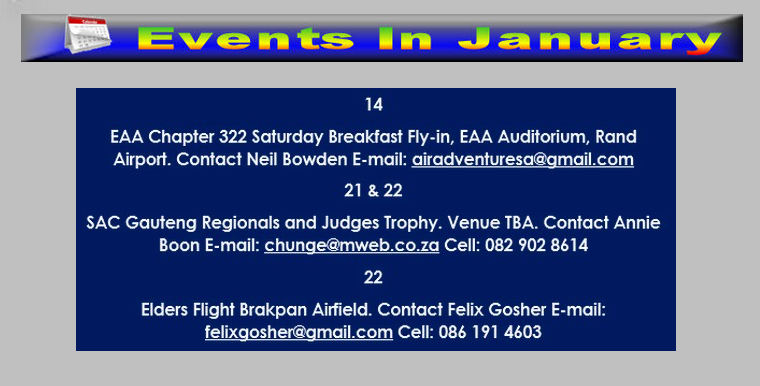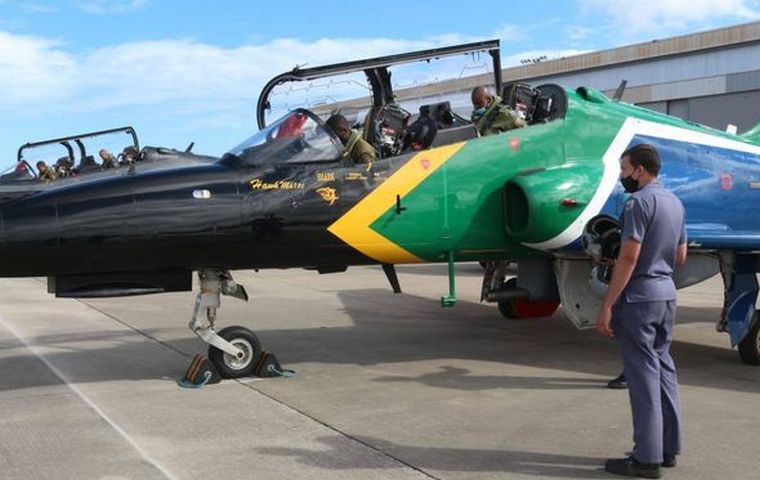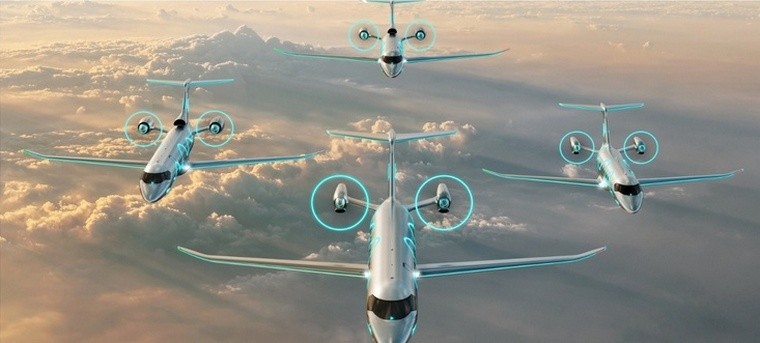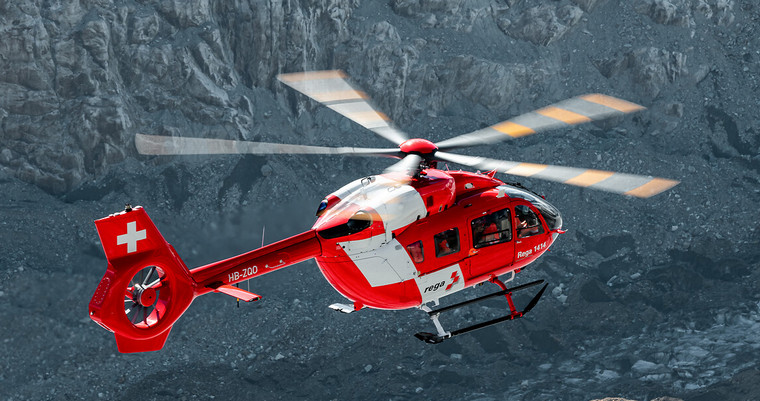








Midweek Update 15 December 2022Google Banner Ad       Since 2012, the Zululand Anti-Poaching Wing has played a vital role in helping to secure one of the world's largest remaining black and white rhino populations in KwaZulu-Natal. During a recent maintenance event on ZAP-Wing's BushCat, the engine was found to have significant metal in the oil. This indicates that there may be a collapse of bearings, gears or bushes within the engine which may lead to a possible engine failure. This has unfortunately grounded the aircraft until a solution can be found. After discussions with the BushCat factory, it was decided that the best course of action would be the replacement of the engine with a Factory New Rotax Engine. This is far from ideal as the ZAP-Wing plays a critical support function to game reserves and local law enforcement. Since February 2022 until the middle of August, when the engine problem was detected the ZAP-Wing managed to achieve the following: A total of 368 hours were flown of which 325 was for patrol and reaction (Plus an additional 35 hours with the Bateleurs). 12 Poached rhino were found by our air wing, 2 wounded rhinos were detected and successfully treated and 4 calves from poached adult females were located and successfully moved to a rhino orphanage to ensure their survival. The ZAP-Wing has also supported with a number of call outs where vultures have been poisoned, to look for the poisoned carcass as well as detect vultures affected by the poison. The aircraft has assisted with locating missing animals as well as locating candidates for preventative de-horning thus minimising the cost per animal. The full replacement cost of the engine is some R420,000 (USD 23,780) of which we have managed to raise R334 000 to date. Delivery of the engine is a minimum of two weeks and a further two weeks is required for the installation, rigging and test flights. Unfortunately, this timeline only starts once we have fully paid for the engine and thus the quest for funding is urgent. We are turning to our supporters, members, friends and possible donors for support in assisting to get the aircraft back in the air and back in the fight as soon as possible. The current engine has given us 5 years of good service and we believe the new engine and accessories will give us another 5 years of exceptional service. If any of our members have the ability to support or forward this urgent appeal for help to anyone that you think would be in a position to support it would be much appreciated. Any and all help will make a massive difference. We are entering the festive season, where we always see a spike in poaching; we need our eyes in the sky to keep our reserves safe and crime free! www.givengain.com/cc/zapwing/ Alternatively, you can make an EFT here: Project Rhino Alliance. First National Bank, Cheque Account account number: 629 203 46229, Branch: Kloof, Branch code: 250 655, Swift code: FIRNZAJJ, Reference: ZAPWING ENGINE.  TOP UN OFFICIAL PRAISES SA CONTRIBUTION TO PEACEKEEPING  The SA National Defence Force (SANDF) and SA Police Service (SAPS) earned a vote of thanks from Jean-Pierre Lacroix, Under Secretary General for Peace Operations in the current “UN Peacekeepers: Service and Sacrifice” Campaign. A statement has him thanking South Africa for its “strong support” to UN peacekeeping as well as for the “sacrifice and service of its military and police personnel deployed under the UN flag”. South Africa first provided peacekeepers to the UN in 1999 when it joined the then UN Organisation Mission in Democratic Republic of the Congo (MONUC). Today, South Africa provides 1 189 uniformed personnel to UN peacekeeping, making it the 15th largest contributor among all UN member states. It is the sixth largest contributor of women peacekeepers, with 230 now serving, according to the statement. “South Africa's largest deployment is with the UN Organisation Stabilisation Mission in Democratic Republic of Congo (MONUSCO), where 1 184 peacekeepers serve. The country contributes police personnel to the UN Interim Security Force for Abyei (UNISFA) and the UN Mission in South Sudan (UNMISS). “In recent decades, South Africa contributed to UN peace operations in Burundi, Ethiopia-Eritrea, Liberia and Nepal as well as to the United Nations-African Union Mission in Darfur, Sudan,” the statement has it. Quoting La Croix, it states: “South Africa's peacekeeping contributions over the years in DRC, through personnel deployed as part of infantry battalions, helicopter units and military medical teams, have been essential to efforts to build peace, as well as to ensure the health and safety of fellow peacekeepers. Additionally, the South African female engagement team's outreach efforts significantly strengthened the mission's relationship with Congolese communities”. “The UN appreciates the service and sacrifice of South African men and women, past and present. We will always remember the 50 South African peacekeepers who lost their lives while serving under the UN flag.” South Africa has endorsed Secretary-General Anotonio Guterres' “Action for Peacekeeping (A4P)” initiative, which aims to strengthen peacekeeping through better targeted mandates, stronger and safer operations, better equipped and trained forces as well as mobilising support for political solutions.  www.defenceweb.co.za  SAAF communicators Captain Thomas Mulaudzi and Flight Sergeant Corne Swart quote camp commandant Major Phumelelo Ndzuta as saying the exercise's objectives were to evaluate “hotline suitability for air-to-air firing training, requalification of operational aircrew as well as qualifying the current operational training course for air-to-air firing”. Those on the weapons camp, now called an air-to-air training exercise, included seven student pilots doing their operational training course (OTC) at 85 CFS. Poor weather impacted on the exercise but did not prevent pilots logging 140 hours over the four weeks. They shot at towed targets, known as “flags” (probably Taxan target drogues). The reporters have Ndzuta saying: “Out of 32 successful hits, 28 flags were launched during the exercise - more than in previous exercises”. The Unofficial SAAF website has the Taxan as an aircraft towed drogue, adding it is “highly manoeuvrable” and fitted with a real time scoring device which counts rounds passing through a volume comparable to an enemy aircraft in size. The target equipment is recoverable and can be re-used.  1. Sixth Generation. The B-21 Raider benefits from more than three decades of strike and stealth technology. It is the next evolution of the Air Force strategic bomber fleet. Developed with the next generation of stealth technology, advanced networking capabilities and open systems architecture, the B-21 is optimised for the high-end threat environment. It will play a critical role in helping the Air Force meet its most complex missions. 2. Stealth. Northrop Grumman is continuously advancing technology, employing new manufacturing techniques and materials to ensure the B-21 will defeat the anti-access, area-denial systems it will face. 3. Backbone of the Fleet. The B-21 Raider forms the backbone of the future for U.S. air power. The B-21 will deliver a new era of capability and flexibility through advanced integration of data, sensors and weapons. Capable of delivering both conventional and nuclear payloads, the B-21 will be one of the most effective aircraft in the sky, with the ability to use a broad mix of stand-off and direct attack munitions. 4. A Digital Bomber. The B-21 is a digital bomber. Northrop Grumman uses agile software development, advanced manufacturing techniques and digital engineering tools to help mitigate production risk on the B-21 program and enable modern sustainment practices. Six B-21 Raiders are in various stages of final assembly and test at Northrop Grumman's plant in Palmdale, California. 5. Cloud Technology. Northrop Grumman and the Air Force successfully demonstrated the migration of B-21 ground systems data to a cloud environment. This demonstration included the development, deployment and test of B-21 data, including the B-21 digital twin that will support B-21 operations and sustainment. This robust cloud-based digital infrastructure will result in a more maintainable and sustainable aircraft with lower-cost infrastructure. 6. Open Architecture. To meet the evolving threat environment, the B-21 has been designed from day one for rapid upgradeability. Unlike earlier generation aircraft, the B-21 will not undergo block upgrades. New technology, capabilities and weapons will be seamlessly incorporated through agile software upgrades and built-in hardware flexibility. This will ensure the B-21 Raider can continuously meet the evolving threat head on for decades to come. 7. A National Team. Since the contract award in 2015, Northrop Grumman has assembled a nationwide team to design, test and build the world's most advanced strike aircraft. The B-21 team includes more than 8,000 people from Northrop Grumman, industry partners and the Air Force. The team consists of more than 400 suppliers across 40 states. 8. Sustainment. Long-term operations and sustainment affordability has been a B-21 program priority from the start. In partnership with the Air Force, our team has made maintainability an equally important requirement to stealth performance to ensure we're driving more affordable, predictable operations and sustainment outcomes. 9. Global Reach. The B-21 Raider will be the backbone of the U.S. bomber fleet and pivotal to supporting our nation's strategic deterrence strategy. In addition to its advanced long-range precision strike capabilities that will afford Combatant Commanders the ability to hold any target, anywhere in the world at risk, it has also been designed as the lead component of a larger family of systems that will deliver intelligence, surveillance and reconnaissance, electronic attack and multi-domain networking capabilities. In a dynamic global security environment, the B-21 will provide the flexibility and deterrence critical to the security of the U.S. and our allies. 10. Raider. The B-21 Raider is named in honour of the Doolittle Raid of World War II when 80 airmen, led by Lt. Col. James “Jimmy” Doolittle, and 16 B-25 Mitchell medium bombers set off on a mission that changed the course of World War II. The actions of these 80 volunteers were instrumental in shifting momentum in the Pacific theatre. This marked the raid as a catalyst to a multitude of future progress in U.S. air superiority from land or sea. The courageous spirit of the Doolittle Raiders is the inspiration behind the name of the B-21 Raider.  TEXTRON'S BELL V-280 VALOR CHOSEN AS NEW U.S. ARMY LONG-RANGE ASSAULT AIRCRAFT Textron Inc (NYSE: TXT) announced that Bell Textron Inc., a Textron company, has been awarded the development contract for the U.S. Army's Future Long-Range Assault Aircraft (FLRAA) program. The award is based on Bell's V-280 Valor tiltrotor that was developed and tested as part of the Joint Multi-Role Technology Demonstrator (JMR TD) program that began in 2013.  “This is an exciting time for the U.S. Army, Bell, and Team Valor as we modernise the Army's aviation capabilities for decades to come,” said Mitch Snyder, president and CEO of Bell. “Bell has a long history supporting Army Aviation and we are ready to equip Soldiers with the speed and range they need to compete and win using the most mature, reliable and affordable high-performance long-range assault weapon system in the world.” This award builds on a decade of the V-280 Valor's progress through design, manufacturing and thorough testing to demonstrate that this aircraft will deliver on the FLRAA program requirements. Bell and its industry partners have systematically validated the V-280 aircraft and their modular open systems approach in collaboration with the Army. “For the past several years the Bell team demonstrated the exceptional operational capabilities, digital thread synergies and platform affordability enhancements the V-280 provides,” said Keith Flail, Executive Vice President, Advanced Vertical Lift Systems at Bell. “Bell stands ready with our world-class manufacturing facilities to apply our nearly seven decades of tiltrotor expertise to deliver a modern FLRAA fleet to the Army.” The initial contract refines the weapon system design, sustainment, digital enterprise, manufacturing, systems integration, flight-testing and airworthiness qualification.  EMBRAER - THE SHAPE OF THINGS TO COME, NEW SUSTAINABLE AIRCRAFT CONCEPTS REVEALED  A year on from Embraer's Sustainability in Action in event, which detailed the study of four new aircraft concepts powered by new technologies and renewable energies, the company has been focusing on two 19-30 seater designs for hybrid electric and hydrogen electric propulsion. Guided by the company's 50 year technical expertise, external inputs from airlines and joint studies with engine OEMs, these two approaches to net-zero offer a technically realistic and economically feasible pathway to net-zero. parallel hybrid-electric propulsion up to 90% CO2 emissions reduction when using SAF 19 and 30 seat variants rear-mounted engines technology readiness - early 2030's .jpg) Energia H2 Fuel Cell (E19-H2FC and E30-H2FC) - revealed as a 19 seater in 2021, Embraer is exploring a 30 seater variant: hydrogen electric propulsion zero CO2 emissions 19 and 30 seat variants rear-mounted electric engines technology readiness - 2035 While still at the evaluation phase, the architectures and technologies are being assessed for technical and commercial viability. The Energia Advisory Group has also been launched to harness inputs and collaboration from partner airlines. Arjan Meijer, President and CEO, Embraer Commercial Aviation, said, “I believe we have set bold but realistic goals for these concepts to come to market. Since we announced our Energia concepts last year, we have been busy evaluating different architectures and propulsion systems. These efforts have resulted in the updates of our concepts that we are sharing with you today. A number of airlines are part of our Energia Advisory Group, the experience and knowledge they bring to the study will be key to accelerate to the next phases.” “As new propulsion technologies will be first applied on smaller aircraft, Embraer is in a unique position. The 19 and 30 seaters are sensible starting points for focused studies since they are likely to present earlier technical and economical readiness,” said Luis Carlos Affonso, Sr. VP of Engineering, Technology and Corporate Strategy, Embraer. “While the challenges of net-zero are significant, in less than 25 years our commercial aircraft have already reduced fuel burn and CO2 emissions by almost 50% on a seat/mile basis, using only conventional fuels and propulsion - I'm convinced net-zero is a goal we can reach.”  www.defenceweb.co.za The agreement, signed last week, covers the localisation of technology should Egypt acquire the Golden Eagle. Egypt is understood to be looking to replace its ageing Alpha Jet and K-8 jet trainers with 100 new jets, of which 70 will be manufactured locally. India's Hindustan Aeronautics Limited is offering its Light Combat Aircraft-Lead-In Fighter-Trainer, based on the Tejas. Other competitors include the Leonardo M-346, Irkut Yak-130, and Aero Vodochody L-39NG. A decision on a new advanced trainer is expected to be made soon. As part of its sales drive, the South Korean aerobatic display team the Black Eagles flew alongside Egypt's Silver Stars over the Giza pyramids during the Pyramids Air Show in August (the Black Eagles fly Golden Eagle jets). Egypt is no stranger to local aircraft assembly - some 80 of its 118 K-8E trainers were assembled from Chinese-supplied kits and 40 were manufactured in Egypt. Egypt is also looking at replacing its propeller-driven primary trainers including the EMB-312 Tucano and Grob G115EG. Grob's G120TP, Sierra Nevada Corporation's A-29 Super Tucano and KAI's KA-1 Woongbi are possible contenders.  SWISS AIR-RESCUE SERVICE REGA ORDERS 12 ADDITIONAL FIVE-BLADED H145S FOR ITS MOUNTAIN BASES  The Swiss Air-Rescue Service Rega has ordered a second batch of 12 five-bladed H145 helicopters to be operated from its mountain bases. They will replace the current fleet of AW109SP helicopters. This new order follows an initial contract for nine H145s, announced in March this year. By 2026, Rega will operate an all-Airbus fleet consisting of 21 five-bladed H145s. “To effectively operate life-saving air rescue services in Switzerland, we understand that the ability to perform optimally at altitude is paramount,” says Bruno Even, CEO of Airbus Helicopters. “The five-bladed H145 landed on the Aconcagua in Chile, a mountain that is nearly 7,000 metres high - no other twin engine helicopter has ever achieved this feat. That is why we are especially proud that Rega has put its faith in the five-bladed H145 and decided to make it the only helicopter type in its fleet to perform such critical missions.” “By selecting the five-bladed H145, we are ensuring that Rega will continue being able to provide its patients with reliable and professional medical assistance by air for the next 15 years,” says Ernst Kohler, CEO of Rega. The five-bladed H145s will come equipped with a state-of-the-art navigation system, especially tailored to the operator's needs that will enhance the mission capabilities and the safety of operations. The system will use new capabilities of the Flight Management System GTN750 Xi by Garmin. It will integrate and control a multi-sensor system that provides highly accurate and reliable navigation capacities. Even in the event of GPS signal loss, the helicopter will navigate safely thanks to Thales' inertial navigation system. This solution will further boost the navigation performance in low IFR conditions and allows the helicopter to be certified as navigation procedure RNP-AR 0.1, which is the most accurate navigation procedure in the helicopter environment. The configuration also includes a new hoist by Vincorion that is being certified on the five-bladed H145, ensuring highest safety standards. Rega operates 14 HEMS stations in Switzerland. Last year, the helicopter crews carried out 14,330 missions, including transporting 471 COVID patients. The new version of Airbus' best-selling H145 light twin-engine helicopter adds a new, innovative five-bladed rotor to the multi-mission aircraft, increasing the useful load of the helicopter by 150kg. The simplicity of the new bearing less main rotor design also eases maintenance operations, further improving the benchmark serviceability and reliability of the H145, while improving ride comfort for both passengers and crew. In total, there are more than 1,600 H145 family helicopters in service, logging a total of more than seven million flight hours. Powered by two Safran Arriel 2E engines, the H145 is equipped with full authority digital engine control (FADEC) and the Helionix digital avionics suite. It includes a high performance 4-axis autopilot, increasing safety and reducing pilot workload. Its particularly low acoustic footprint makes the H145 the quietest helicopter in its class, while its CO2 emissions are the lowest amongst its competitors.   Kenya, near Huri, Tsavo National Park: A Cessna A185F Skywagon operated by the David Sheldrick Wildlife Trust with two on board on a cattle drive operation crashed near Huri, Tsavo National Park. Both occupants died.  USA, 150 NM N of Tampa International Airport, FL: A NovaJet Bombardier BD-100-1A10 Challenger 350 with three occupants was on a flight from St Johns to Tampa International in the USA when the crew received an EICAS (Engine Indicating and Crew Alerting System) warning for fluctuating #1 engine hydraulic temperature that exceeded the limitation of the system. The crew completed the appropriate checklist procedure which resulted in shutting down the #1 engine. The crew then declared an emergency and completed a single engine approach and landing at KTPA. The nosewheel steering was affected as a result of the loss of #1 engine hydraulic system and although the crew safely exit the runway, a tow vehicle was required to reposition the aircraft to the fixed based operator.  USA, Pulaski County, GA: A Piper PA-44-180 Seminole with only the pilot on board was destroyed subsequent to an impact with trees and terrain in Pulaski County, Georgia. The pilot received unspecified injuries. USA, Clarence E. Page-Cimarron Municipal Airport (RCE/KRCE), Yukon, OK: A Beechcraft F33A Bonanza with three occupants crashed on airport property shortly after take-off from Clarence E. Page-Cimarron Municipal Airport (RCE/KRCE), Yukon, Oklahoma. The aircraft was destroyed and there were no survivors.  Russia, Dyagilevo Air Force Base, near Ryazan: A Russian Air Force Tupolev Tu-22M3 strategic bomber was damaged during a Ukrainian attack on Dyagilevo Air Base, Ryazan Oblast, Russia. Three ground crew members were killed and five wounded. Most likely a Tupolev Tu-141 Strizh reconnaissance UAV packed with explosives was used to carry out the attack.  8 DECEMBER 1967 Lawrence was flying backseat on the mission as the instructor pilot for a flight test trainee learning the steep-descent glide technique intended for the cancelled Boeing X-20 Dyna-Soar program. The pilot of the aircraft successfully ejected and survived the accident, but with major injuries. The F-104 they were flying came in too low and hit the runway. Royer ejected, but Lawrence was killed.   Bantam at Sue's Place Google Banner Ad  |
                        |
 |
 |

Copyright © Pilot's Post PTY Ltd
The information, views and opinions by the authors contributing to Pilot's Post are not necessarily those of the editor or other writers at Pilot's Post.